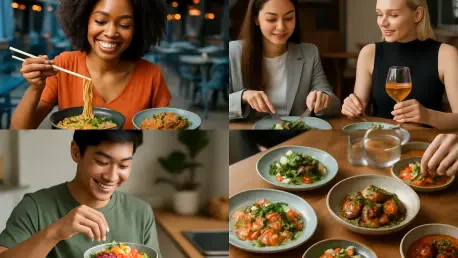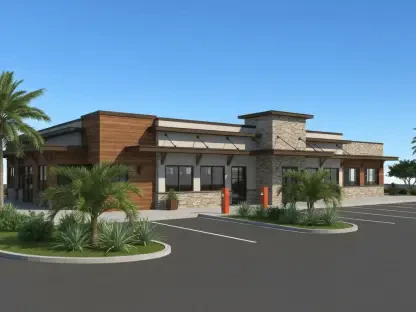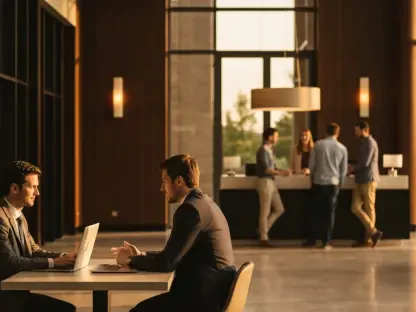I’m thrilled to sit down with Katarina Railko, a seasoned hospitality expert with deep roots in the travel and tourism industry. With her extensive experience and passion for entertainment and events, Katarina has become a trusted voice in understanding dining trends and consumer behavior. Today, we’re diving into the insights from the latest OpenTable 2026 Dining Trends Report, exploring everything from the evolving perception of value in dining to the rise of spontaneity, the influence of Millennials, and the growing demand for unique experiences. Let’s uncover what’s shaping the future of eating out.
How do you see the overall landscape of dining out evolving as we head into 2026, based on the latest insights?
I think we’re looking at a really exciting time for dining out in 2026. The data showing an 8% increase in dining year-over-year tells us that restaurants remain a vital part of American life. People are prioritizing experiences and connection, with over half of Americans planning to spend more on eating out next year. It’s not just about food anymore; it’s about creating memories and fostering community. I believe this reflects a cultural shift where dining out is seen as an investment in personal and social well-being, even amidst economic fluctuations.
What do you think is fueling this growing enthusiasm for eating out, especially with such a significant uptick in frequency?
A big driver is the human need for connection. After years of ups and downs, people are craving in-person interactions, and restaurants provide that perfect setting. The report mentions Americans dining out about 10 times a month on average, which shows how integral it’s become to our routines. Plus, with the rise of hybrid work models, folks are looking for ways to break out of their home environments. Dining out offers a convenient escape, a chance to socialize, and an opportunity to treat oneself, which I think is resonating deeply right now.
With diners increasingly viewing dining out as a special occasion, what’s behind this shift in perception?
The report highlights that 61% of Americans see dining out in 2026 as more of a treat than a regular habit, and I think this ties into a broader focus on value. People are being more intentional with their spending, wanting every dollar to count. Economic pressures might play a role, but it’s also about seeking meaningful experiences. Diners aren’t just grabbing a quick bite; they’re looking for moments that feel memorable, whether it’s a unique ambiance or a standout dish. This mindset elevates dining into something worth savoring.
How are restaurants responding to diners seeking better deals, especially with trends like the rise in happy hour dining?
Restaurants are getting creative, and the 13% increase in happy hour dining between 4:00 and 4:59 pm is a clear sign of that. They’re offering discounted menus, special promotions, and unique small plates during these off-peak hours to attract budget-conscious diners. It’s a win-win—diners get more value, and restaurants fill seats during slower times. I’ve also seen more places marketing these deals on social media to draw in crowds looking for an affordable way to enjoy a night out without sacrificing the experience.
With the huge jump in the use of tools for spontaneous dining, what does this reveal about how people are approaching their restaurant choices?
The 84% surge in the use of features like OpenTable’s “Notify Me” tool shows that diners are embracing flexibility. They’re not always planning weeks ahead; instead, they want to seize the moment. This ties into the 49% of Americans craving more spontaneity in 2026. It’s a reflection of our fast-paced lives—people want to make decisions on the fly, whether it’s grabbing a last-minute reservation or discovering a new spot. It’s all about living in the now, and technology is making that easier than ever.
How can restaurants adapt to this growing desire for last-minute dining experiences?
Restaurants need to lean into flexible systems. This could mean holding a percentage of tables for walk-ins or optimizing reservation platforms to handle real-time bookings. I’ve seen some places offer waitlist features or even text alerts when a table opens up. It’s also about training staff to manage quick turnovers without compromising service quality. Building a reputation for accommodating spontaneity can set a restaurant apart, especially for younger diners who thrive on impromptu plans.
Millennials are set to be the most frequent diners in 2026—why do you think they’re leading the charge?
Millennials, dining out around 14 times a month, are at a life stage where socializing and experiences are huge priorities. They’re often in their peak earning years, yet they value experiences over material things. They’ve grown up with food culture being a big part of identity—think food trucks, pop-ups, and global cuisines. Plus, they’re tech-savvy, so discovering and booking restaurants is second nature. For them, dining out isn’t just eating; it’s a lifestyle, a way to connect and explore.
Considering how much Millennials value a restaurant’s social media presence, how critical is a strong online image for businesses today?
It’s incredibly important—79% of Millennials factor in a restaurant’s “Instagram or TikTok-worthiness” when choosing where to eat. A visually appealing feed or viral content can drive foot traffic like nothing else. Restaurants need to invest in good photography, engage with followers, and even create shareable moments, like unique decor or signature dishes. It’s not just marketing; it’s about crafting an identity that resonates online. If a place looks good on a screen, it’s already halfway to winning over this demographic.
We’re seeing a shift away from shared plates but a rise in group dining—how do you interpret this balance?
The data showing 52% of Americans preferring their own dish while group dining rises by 11% tells an interesting story. People still want to gather—40% prefer eating with others over dining solo—but they’re prioritizing personal choice over communal eating. It’s likely tied to wanting control over portions or dietary needs. Restaurants can cater to this by offering customizable menus or smaller plates for individual orders while still creating spaces that feel welcoming for groups. It’s about togetherness without sacrificing individuality.
With experiential dining gaining so much traction, what kinds of unique offerings are resonating with diners right now?
Experiential dining, up 46% year-over-year, is all about creating something diners can’t get anywhere else. Think pop-up events, chef collaborations, or themed nights—things that feel exclusive or fleeting. The report mentions a 34% increase in offerings like chef’s tables, which give a behind-the-scenes peek. Also, 48% of Americans are drawn to restaurants with unique experiences, and many are sticking to neighborhood spots for that local charm. It’s about storytelling through food, making diners feel part of something special.
What’s your forecast for the future of dining trends as we move further into 2026 and beyond?
I see dining continuing to evolve as a deeply personal and social experience. Technology will play an even bigger role—think AI tools helping diners find the perfect spot, as 44% of Americans are open to using it. I also expect value and authenticity to remain key, with diners seeking out restaurants that offer genuine experiences over flashy gimmicks. We’ll likely see more hyper-local and nostalgic dishes, blending comfort with innovation. Ultimately, restaurants will need to balance accessibility with uniqueness to keep capturing hearts and stomachs in the years ahead.









